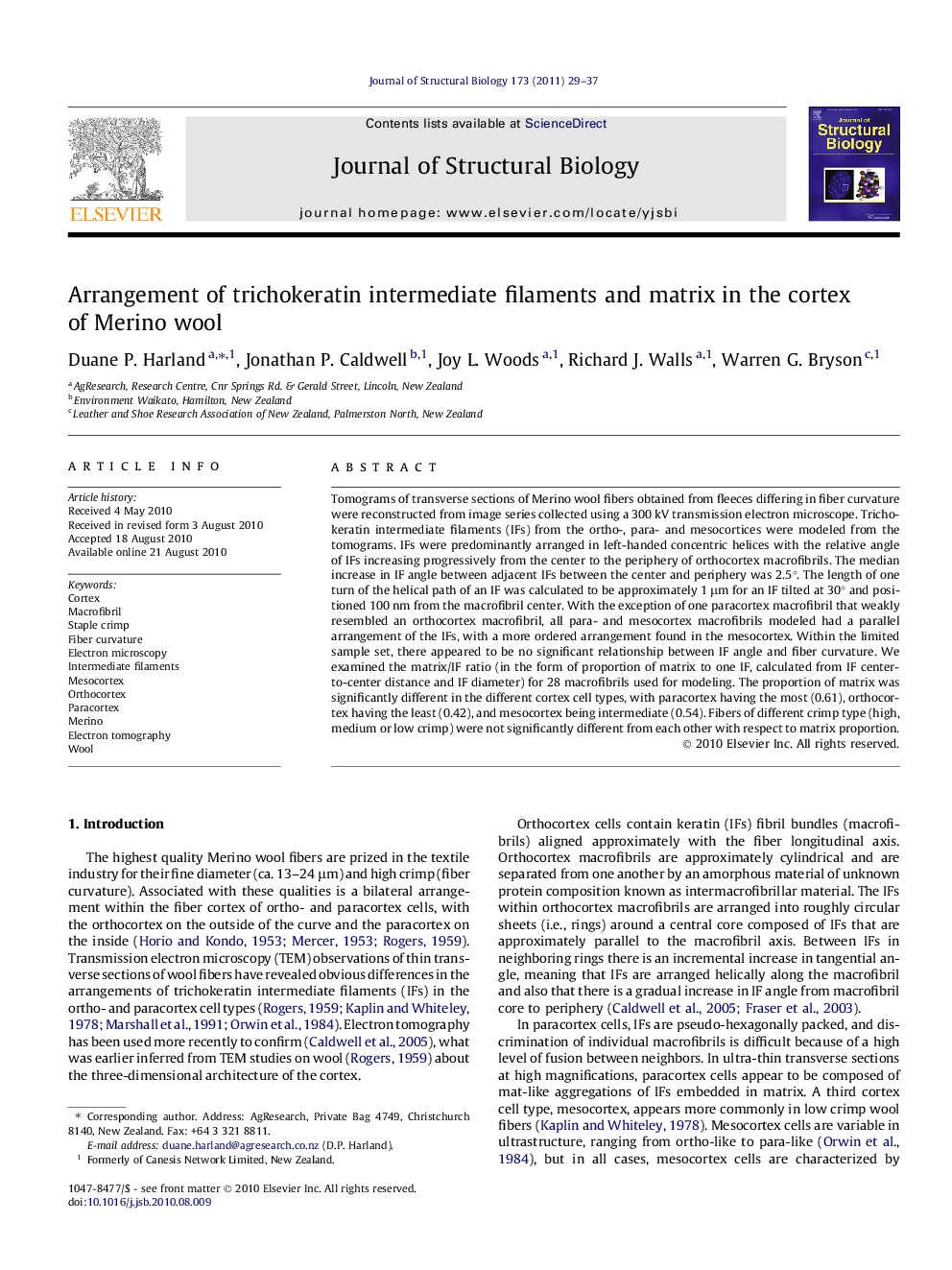| Article ID | Journal | Published Year | Pages | File Type |
|---|---|---|---|---|
| 2828766 | Journal of Structural Biology | 2011 | 9 Pages |
Tomograms of transverse sections of Merino wool fibers obtained from fleeces differing in fiber curvature were reconstructed from image series collected using a 300 kV transmission electron microscope. Trichokeratin intermediate filaments (IFs) from the ortho-, para- and mesocortices were modeled from the tomograms. IFs were predominantly arranged in left-handed concentric helices with the relative angle of IFs increasing progressively from the center to the periphery of orthocortex macrofibrils. The median increase in IF angle between adjacent IFs between the center and periphery was 2.5°. The length of one turn of the helical path of an IF was calculated to be approximately 1 μm for an IF tilted at 30° and positioned 100 nm from the macrofibril center. With the exception of one paracortex macrofibril that weakly resembled an orthocortex macrofibril, all para- and mesocortex macrofibrils modeled had a parallel arrangement of the IFs, with a more ordered arrangement found in the mesocortex. Within the limited sample set, there appeared to be no significant relationship between IF angle and fiber curvature. We examined the matrix/IF ratio (in the form of proportion of matrix to one IF, calculated from IF center-to-center distance and IF diameter) for 28 macrofibrils used for modeling. The proportion of matrix was significantly different in the different cortex cell types, with paracortex having the most (0.61), orthocortex having the least (0.42), and mesocortex being intermediate (0.54). Fibers of different crimp type (high, medium or low crimp) were not significantly different from each other with respect to matrix proportion.
